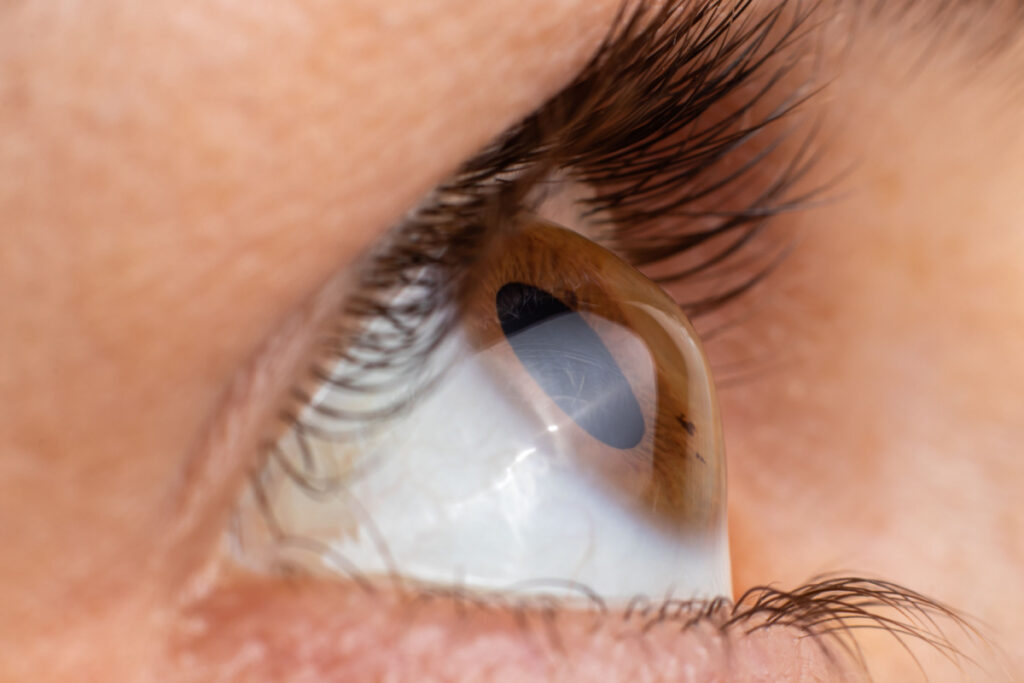
A healthy cornea — the transparent, outer layer located at the front of the eye — has a regular, round shape supported by collagen and is able to focus light entering the eye so that you can see clearly. However, those with keratoconus — an eye condition that impacts the shape of the cornea — have a thinning cornea that bulges and results in loss of vision. The cause of keratoconus is not fully understood, and the progression of the disease can be difficult to predict, but there are risk factors associated with the disease that can help you recognize the condition and seek vision-saving treatment. Ahead, Dr. Stein discusses some of these factors.
Family History
Keratoconus can be hereditary, so if you have a family history of keratoconus, your risk of developing the condition may be increased. In these cases, the person at risk of keratoconus often has one parent with keratoconus.
Biological Factors
People are sometimes born with an abnormal structure of corneal tissue, which can cause thinning of the cornea. Also, changes in vision related to keratoconus can occur during times of significant hormonal fluctuations, like during pregnancy or puberty.
Eye Rubbing
In addition to genetics, keratoconus is sometimes believed to be related to certain environmental triggers. For example, allergies can lead to eye itching and rubbing, which is believed by many to be a major risk factor for keratoconus. Aggressive, repeated eye rubbing can lead to trauma in corneas that are already thin or weak and may contribute to the development or worsening of keratoconus.
Certain Environments
Those that live in a dry, dusty climate may experience keratoconus at higher rates, likely due to the eye irritation that may be experienced in these environments.
Related Disorders
Keratoconus can sometimes be associated the underlying health conditions, including:
Down syndrome: This chromosomal anomaly can result in an increased risk for a number of ophthalmic disorders, including keratoconus.
Connective tissue disorders: Patients with certain disorders that affect connective tissue or the skin, such as Ehlers-Danlos syndrome or Marfan syndrome, are more likely to have a keratoconus.
Keratoconus Treatment
Keratoconus can diminish your vision and quality of life, but there are several effective treatments available to you, depending on the stage of the disorder. If your vision is being affected by this eye condition, don’t wait to seek help. Dr. Stein is ready to help you restore your vision and help you manage this condition. To get started, contact our office or schedule an appointment today.